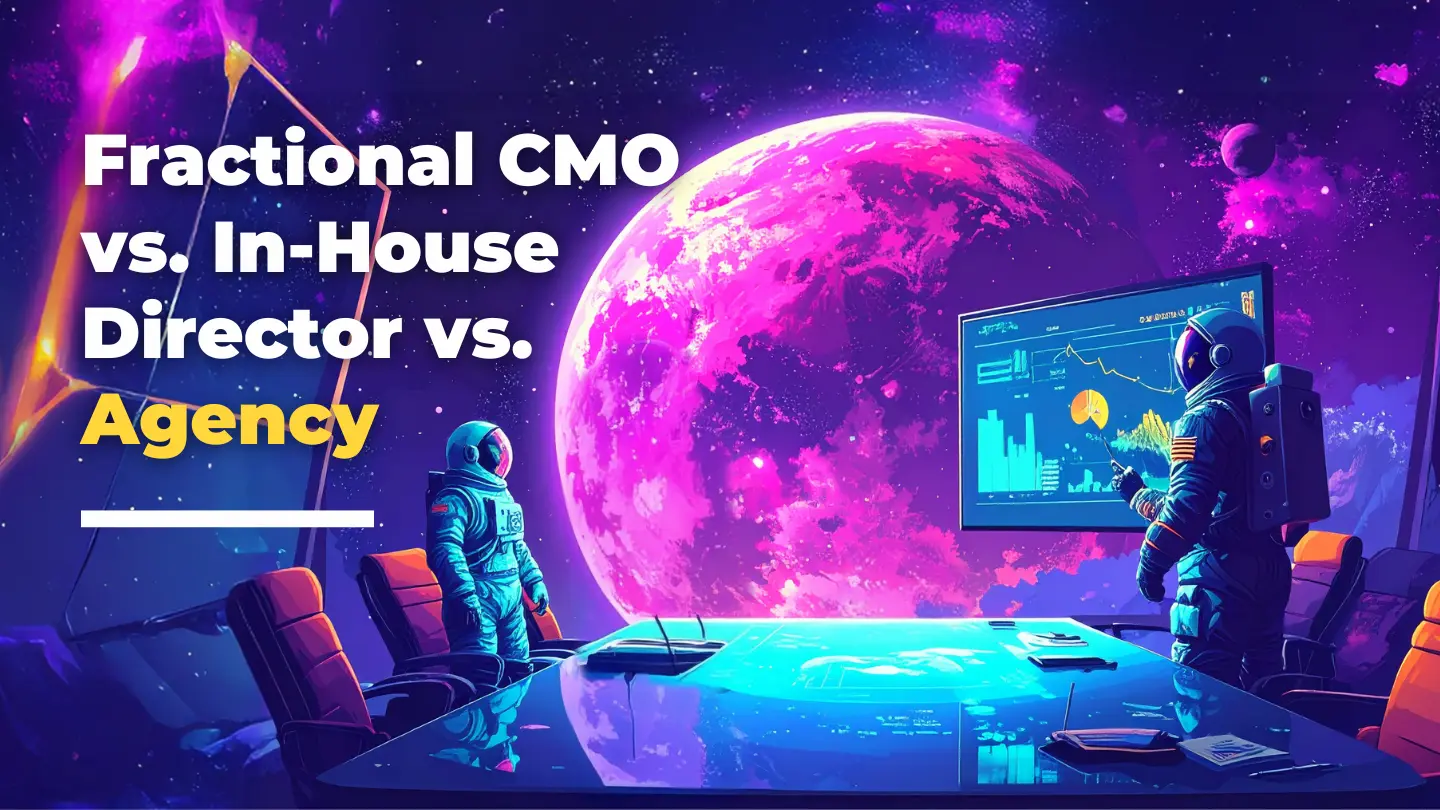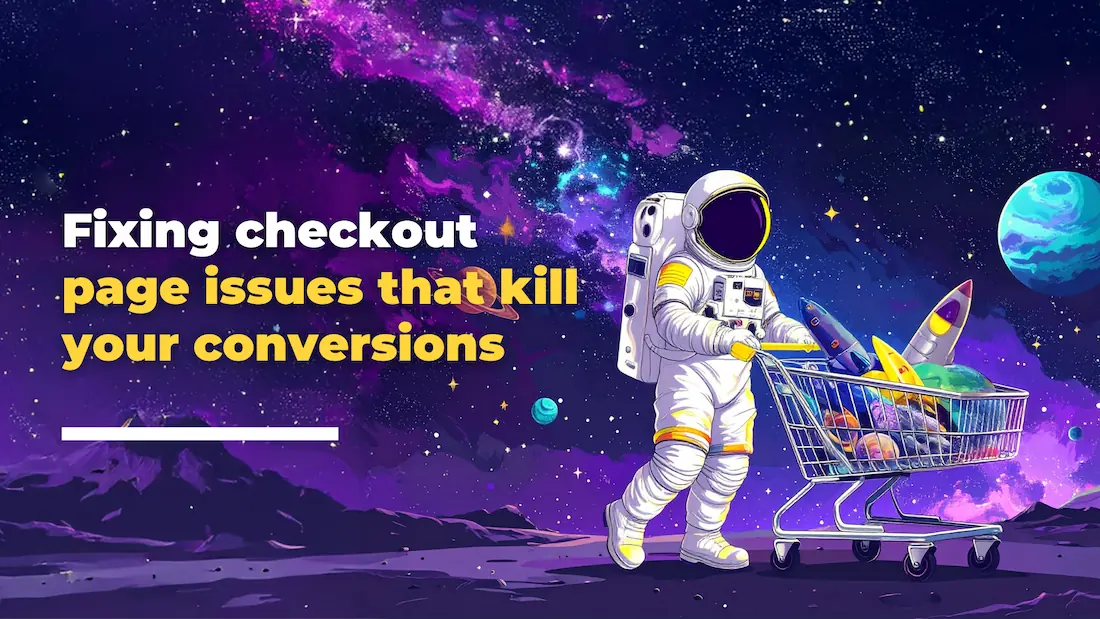Does this sound like you? Your business is scaling, but your marketing strategy isn’t keeping up. You have a capable junior team handling the day-to-day tasks, but you feel a growing gap where senior-level strategic leadership should be. This leadership vacuum is why growth has plateaued and “random acts of marketing” continue to drain your budget.
You know you need to make a change, but the path forward is unclear. Should you hire a full-time Director? Engage a Fractional CMO? Or partner with an agency? Making the right choice for your marketing partner is critical for your next stage of growth. This guide offers an objective breakdown to help you decide.
Option 1: The In-House Marketing Director
This is the traditional approach: hiring a full-time, senior-level marketing leader to join your executive team.
- Pros: This person is 100% dedicated to your business, deeply immersed in your company culture, and can work closely with other departments.
- Cons: This is the most expensive option, with a significant salary, benefits, and overhead. You are also hiring for a single person’s skillset, which may not cover the full spectrum of modern marketing needs (e.g., they might be a great brand strategist but weak on technical SEO).
- Best For: Larger, well-established companies with a mature marketing function and the budget to support a full-time executive salary and the team they will need to hire.
Option 2: The Fractional CMO (fCMO)
A Fractional CMO is an experienced, part-time marketing executive who provides high-level strategy and guidance for a “fraction” of the cost of a full-time hire.
- Pros: You get access to C-suite level strategic expertise and leadership without the executive-level salary. An fCMO can build your marketing roadmap, manage your team, and report to the leadership board.
- Cons: The primary drawback is the “strategy-execution gap.” Most fCMOs focus exclusively on high-level planning, leaving your junior team to handle the execution. If your team lacks the capacity or specific skills to execute the plan, the strategy remains on paper.
- Best For: Companies that have a strong, self-sufficient internal marketing team that can execute effectively but simply needs senior-level direction, mentorship, and a strategic plan to follow.
Option 3: The Strategic Agency Partner
This model involves partnering with a marketing agency that acts as an extension of your team, providing both senior-level strategy and a full team of specialists for execution.
- Pros: This is often the “best of all worlds” for a scale-up. You get a dedicated strategic lead who functions like a Fractional CMO, plus access to a diverse team of experts (creatives, SEO specialists, ad managers, etc.) for implementation. This integrated “asset + activation” approach ensures the strategy is not just built, but built to work. It’s a full growth engine, not just a map.
- Cons: Some founders worry an agency won’t be as deeply integrated into their culture as a full-time employee. This is why choosing a true “partner” over a “vendor” is critical.
- Best For: Growth-focused businesses that have hit a plateau and need to bridge the gap between strategy and execution. It’s ideal for founders who want a proven, engineered system for growth and the expert team needed to run it.
| Feature | In-House Director | Fractional CMO | Strategic Agency Partner |
| Cost | Highest | Medium | Medium-High (High Value) |
| Core Function | Leadership & Team Mgmt | Strategy & Guidance | Strategy & Full Execution |
| Team Access | Hires their own | Utilizes your team | Full team of specialists |
| Biggest Risk | High cost & single skillset | Strategy-Execution Gap | Ideally, a true partner that manages it all for. you |
5 Key Questions to Ask Before You Choose a Marketing Partner
This question goes beyond a simple org chart. It’s about chemistry, collaboration, and mentorship. You have a capable junior team that needs senior-level strategic leadership, not just a taskmaster. A true partner will act as an extension of your team, filling the leadership gap while empowering your existing employees. You should be wary of any passive vendor who just waits for instructions; you need an active guide who can collaborate effectively with your leadership and inspire your team.
1. How will this new leader integrate with my existing team?
This question goes beyond a simple org chart. It’s about chemistry, collaboration, and mentorship. You have a capable junior team that needs senior-level strategic leadership, not just a taskmaster. A true partner will act as an extension of your team, filling the leadership gap while empowering your existing employees. You should be wary of any passive vendor who just waits for instructions; you need an active guide who can collaborate effectively with your leadership and inspire your team.
2. Which model can handle the complexity and scale of my business?
Your goal is not just to solve today’s marketing problems but to build sustainable, scalable growth teams. This question addresses your potential concern about scalability. While a single in-house hire has a finite capacity, a flexible partner can bring in different specialists as your needs evolve. The right choice will provide a clear path out of marketing chaos and into predictable, scalable growth, ensuring the framework can handle the increasing complexity of your business as you expand.
3. What is the partner’s process for understanding our niche industry and customers?
This is a critical question to vet a potential partner’s strategic depth. A true partner will acknowledge that your business is in a niche industry and will have a process to understand your specific customers’ problems. Look for a partner who emphasizes that they “First, We Listen. Then, We Build a Plan”. Any agency that jumps straight to tactics without a”Strategic Diagnosis” or a deep analysis of your brand and market is selling you a generic solution, not a customized roadmap for growth.
4. Which option provides a complete solution for strategy and execution?
A brilliant strategy is useless if you lack the internal resources or capacity to execute it effectively. This question helps you avoid the common “strategy-execution gap.” You need a partner who combines rigorous, data-driven strategy with the creative spark needed to capture your audience’s attention. This integrated “asset + activation” approach ensures that your marketing assets—like your website—are not just built, but are built to work as a hardworking part of your growth engine.
5. How will success be measured and reported?
As a data-driven, ROI-focused leader, you need a partner who speaks your language. You’re tired of reports focused on marketing “activities” instead of business “outcomes”. The right partner will focus on “Results You Can See” by transparently tracking the metrics that matter to your bottom line, such as lead quality and marketing ROI. This ensures every marketing action is connected to a business outcome, giving you the confidence that your investment is leading to tangible results.
Choosing The Right Path Forward
Choosing your next marketing partner is a pivotal decision. An in-house director offers deep integration but at a high cost. A Fractional CMO provides valuable strategy but can leave your team struggling to execute. For many scaling businesses, a strategic agency partner offers a more comprehensive solution: the senior-level leadership you lack and the specialized execution team you need, all working together to build a predictable engine for growth.
Wondering which marketing partner model is right for your business? Schedule a discovery call, and let’s find a clear path forward.





